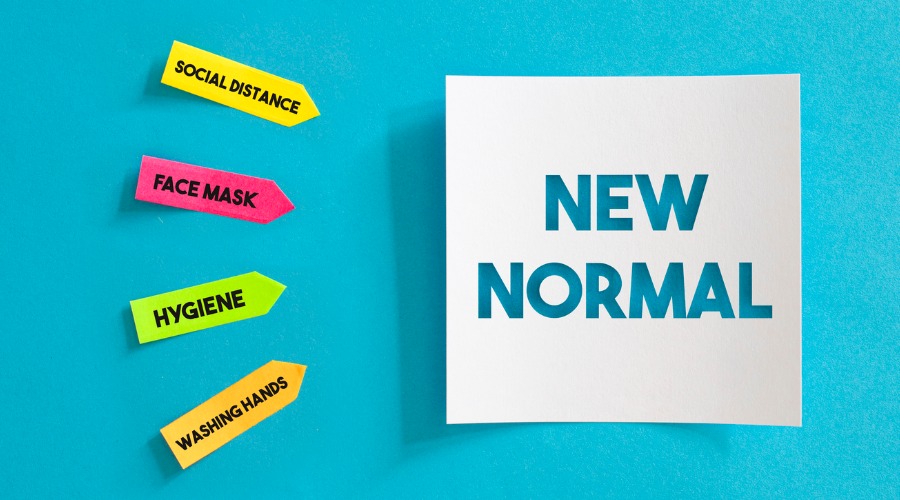This article continues a series of communications from GGA Partners to help private club leaders address challenges confronting their businesses and their employees as a result of the global health crisis. Today, Laurie Martin (Founder/CEO, Life Interrupted Inc.) offers several tips for club leaders to consider while navigating the ‘new normal’.
As a leader, you have made it through the initial weeks running on adrenaline as you and your organization have had to pivot quickly to address the COVID crisis. While you continue adapting to your makeshift workspaces at home, and preparing to keep your people safe, the realities of emotional, physical and psychological upheaval are revealed
Over the past few weeks, I have noticed a common thread of stresses related to adaptation and uncertainty. Phrases like: “Since I’ve been home, I have never worked this hard”, “I need stress-debriefing techniques to keep my sanity” and “I can’t stand this!” demonstrate the need to acknowledge the tensions in our surroundings and start a conversation about finding stability and hope.
Now, clubs around the world are moving into position to open slowly and methodically. As a leader, your fears and concerns for employees and their families, members, and the general public are heightened. The focus has been on best practices to deter or stop COVID-19 from coming to the club. Now, employees have become essential workers and their stress levels will be heightened.
Leaders will need to create best safety practices that work for their clubs. They will also need to provide a support system to help employees and members deal with the enormous changes of the new normal at clubs. Employees will be looking at each other wearing appropriate personal protection equipment and following a series of new safety protocols and wonder if the masks or shields will protect them. Members will now be playing their sport very differently and question whether the club will ever be the same again.
There’s no question, this pandemic has created a different way for clubs to operate now and likely in the future. The templates of tasks and best practices that clubs around the world have received are only a small part of what employees and leaders need to consider. Each club is unique, with its own practices and services. As a leader, you will have to determine what works best for the club. You may consider to have a second opinion from an external professional working in risk management/health and safety professional guiding you to opening day.
Here are some tips to consider while coping with the new normal at your club:
Embrace the new normal
Our professional and personal lives have shifted and it is important to accept the reality that things will never go back to the way they were. Create new plans, or enhance previous plans and enjoy the freedom to be creative. Use the skills and knowledge you’ve accumulated through this crisis.
Choose your thoughts
If we do not choose positive thoughts, we will face sadness and experience that “I give up” feeling. Try to remain optimistic and choose thoughts that will motivate you. You must believe you can do something, or you won’t even try. You can overcome negative thoughts with positive ones.
Stay connected
Fear isolates and distances people. As a leader and an entrepreneur, it is your responsibility to keep your family, friends, employees, colleagues, board of directors, and members connected and updated. Communication, collaboration and transparency are key during this difficult time. Promote video chats, share resources, reach out and ask how everyone is doing, encourage more casual interactions, and spread optimism. This is also an opportunity to learn new things to enhance your knowledge and streamline your business.
Share your feelings
It is beneficial to demonstrate the emotional side of your leadership, especially in tough times where members, friends, family, and colleagues are anxious or uncertain of the impact of COVID-19 on the economy. Now is the time to reach out and ask how others are dealing with working from home or with the stress of COVID-19. It’s also good to share your concerns. Sharing your own vulnerability will help others to do the same. Remember, we are all experiencing similar feelings of grief, stress, uncertainty and living day by day.
Accept diversity
It is important to remember that each one of us has a unique home life. Our lifestyles, habits and priorities all differ, which is coming to light as we collaborate from our homes. Some may be experiencing additional challenges such as financial burdens, potential job loss, death of a loved one, divorce, fear of going back to work, etc., and it is important to be mindful of this. Additionally, our methods of coping differ, so be gentle and try to keep an open mind. It’s important to create time out for yourself too.
Stay away from deception and misinformation
There is a great deal of fear associated with the COVID-19 pandemic and, unfortunately, this fear has triggered a wave of insecurity, and misinformation. It is important to distance yourself from this when possible. Ignore negativity and work from facts not rumours. Educate yourself by reading reputable, peer-reviewed sources and recognize and address your own fears. Contact an external resource you know in the club industry that provides education and tools that can be resourceful.
Set boundaries
If you live with others in your home, working in tight quarters can cause increased stress nd frustration. It is important to establish boundaries. Determine who is going to be in which room, when, and set an agreed time limit for how long. This will help minimize disruptions. Having a clear conversation about how to reasonably share your home space will ultimately reduce conflict. You may want to consider setting boundaries on screen time and media exposure which can reduce the feelings of being overwhelmed and help you gain control of your situation.
Create a routine
If you are working from home, building a routine will help you foster a sense of normalcy and allow you to stay on track. Wake up at your usual time, get dressed as you would normally, have your coffee and breakfast, get your kids ready, stick to some type of exercise regimen. Create a good night-time routine and stay away from reading emails before bed. This will keep your immune system healthy and boost your resilience.
Take breaks
Taking breaks throughout your workday is pivotal to productivity. Take a 5-10-minute break every hour to stretch, take deep breaths, drink water, have a healthy snack or get some fresh air. You should also take some time to have your lunch each day. Support a local business in your area by ordering food through a delivery service.
Practice self-care
As leaders, it is natural to put the needs of your family, employees and members before your own. However, it is important to take care of yourself too. Take care of your body, your mind, and your spirit. Make time to unwind. Practising self-care will reduce your stress, clear your mind, and help you to better support and work with others.
Don’t forget hope
While COVID-19 is impacting our daily routines, it is comforting to know that there are still moments of strength that help us realize we can get through this together. Communities coming together, inspiring stories, businesses opening, and people connecting while respecting physical distancing are all signs of hope that we shouldn’t ignore.
A ‘new normal’ for leaders
As leaders, you’ve already felt the stress and emotional upheaval when the clubs were closed down for the pandemic. Now you get to experience the stress of anticipating when they will open again, and question whether you’re doing everything you can to keep people safe. Hopefully, leaders are doing their due diligence by taking the templates and customising the best practices and creating policies in place, ordering personal protective equipment and supplies ahead of time. Asking for a second opinion by reaching out to the services of risk management or health and safety experts familiar with the club industry to guide them to a new normal for pre- and post-opening day.
Although these days are filled with uncertainty and we continue to feel overwhelmed, disconnected and out of control, it is important remember we are all in this together. There will be an end to this pandemic, and we are going to learn a lot about ourselves as leaders and as people.
Laurie Martin, CTTS, EPC, founder of Life Interrupted Inc.
 She is an innovator with an ability to change the way club leaders think, both professionally and personally, and to enhance their lives. Laurie brings over 25 years of risk management and crisis education experience, and more than 17,000 hours of accredited frontline experience. She educates by using a solid process for preparing for any crisis or critical life interruption, before, during and after. Laurie’s techniques keep leaders and their teams connected, resilient, focused and to stay safe. All programs provide education credits. To learn more, contact Laurie at laurie@lifeinterrupted.ca, or, visit lifeinterrupted.ca.
She is an innovator with an ability to change the way club leaders think, both professionally and personally, and to enhance their lives. Laurie brings over 25 years of risk management and crisis education experience, and more than 17,000 hours of accredited frontline experience. She educates by using a solid process for preparing for any crisis or critical life interruption, before, during and after. Laurie’s techniques keep leaders and their teams connected, resilient, focused and to stay safe. All programs provide education credits. To learn more, contact Laurie at laurie@lifeinterrupted.ca, or, visit lifeinterrupted.ca.




